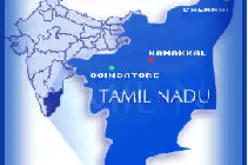LiDAR Scanning Can Help Identify Structurally Heterogeneous Forest Areas

The inequality of tree sizes in a forest is an important factor affecting its structure and ecology. Forest management practices favouring natural regeneration can result in greater heterogeneity and complexity of forests, which may be desirable for some purposes, but at the same time makes forest monitoring and management more difficult. A recent study from the University of Eastern Finland analysed the most suitable indicators for expressing size differences among neighbouring trees and developed methods to obtain these indicators using the lidar technology. In this method, forests are scanned with a laser on board a plane, penetrating the canopy and providing valuable information of their entire vertical profile.

Extraction of individual trees using crown widths predicted from terrestrial laser scanning (TLS) derived diameter at breast height.
Methods familiar from economics applicable to forest sciences, too
The doctoral thesis of Rubén Valbuena, PhD, applied the Lorenz curve, a mathematical method usually employed in economics for studying inequality of wealth within societies, to the study of tree size inequality. Similarly as a society can be evaluated not just for being rich but also for being egalitarian, a forest can be evaluated for its structural complexity – in addition to other, more customary, properties like its biomass and growth.
The study used indicators based on the Lorenz curve, such as the Gini coefficient, to create maps of several study areas in Finland and Spain. These maps were created using the lidar technology, allowing researchers to easily identify various structural properties of forests, evaluate different types of forest management regimes, and monitor compliance of forestry practices with legal restrictions to logging. The lidar-based tools developed in the study have the potential to assist in these tasks, since the laser scans are obtained throughout entire forest areas, providing high-resolution maps of changes within small forest areas. These constitute a cost-effective way to monitor that the activities of forest producers are environment-friendly.
Development of pan-European indicators
The ultimate goal of research is to develop indicators that can be obtained at national scales and used for pan-European comparison of structural properties of forests. This is nowadays possible as entire countries are currently being scanned with lidar. Rubén Valbuena’s work towards the practical implementation of a lidar-based scheme of pan-European indicators of forest structural complexity will continue at the University of Cambridge with the help of a recently awarded Marie Skodowska-Curie individual grant.
###
The doctoral thesis was carried out in collaboration between the European Forest Institute and the University of Eastern Finland, as well as with the Technical University of Madrid and the Natural Resources Institute of Finland. The study was funded by the Finnish Forest Service via the Foundation for European Forest Research. The findings were originally published in renowned international journals such as Forest Ecology and Management, Canadian Journal of Remote Sensing, Baltic Forestry, ISPRS Journal of Photogrammetry & Remote Sensing, Canadian Journal of Forest Research and Ecological Indicators.
For further information, please contact:
Researcher Rubén Valbuena, rubenval@uef.fi










